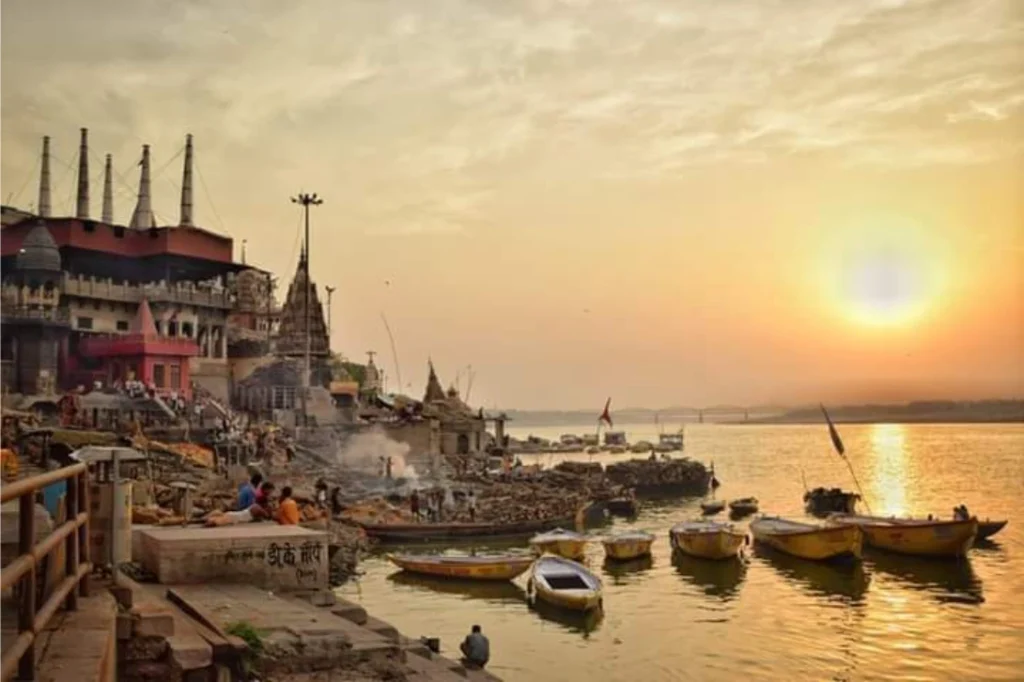History & Heritage
Varanasi, often called the spiritual heart of India, is one of the world’s oldest continuously inhabited cities. Situated on the banks of the sacred Ganges River in Uttar Pradesh, it has been a center of religion, culture, and learning for thousands of years. The city’s history is deeply connected to Hinduism, Buddhism, and Jainism, making it a significant pilgrimage site for millions of people. The origins of Varanasi can be traced back over 3,000 years, with some legends suggesting that it was founded by Lord Shiva himself. Ancient Hindu scriptures, such as the Rigveda, mention the city as a place of great spiritual and intellectual importance. Over the centuries, it became known as a hub for scholars, poets, and philosophers who contributed to the growth of Sanskrit literature and religious teachings. It was home to many great minds, including the famous saint Kabir and poet Tulsidas, who wrote the Ramcharitmanas. Throughout history, Varanasi has witnessed the rise and fall of numerous dynasties. While Hindu rulers fostered its growth, it also endured invasions and destruction, particularly during the Mughal era. Despite these challenges, the city’s spiritual core remained unshaken. During the 18th century, Varanasi saw a revival, thanks to the efforts of rulers like Queen Ahilyabai Holkar of Indore, who restored many of its temples and ghats. One of the most striking features of Varanasi is its ghats—stepped riverbanks leading down to the Ganges. These ghats serve as places for prayer, meditation, and purification rituals. Some of the most famous ones include Dashashwamedh Ghat, known for its grand Ganga Aarti ceremony, and Manikarnika Ghat, where cremations take place as per Hindu traditions. Many believe that those who pass away in Varanasi and have their last rites performed here attain moksha, or liberation from the cycle of birth and death. Apart from its religious importance, Varanasi is also a hub for arts, music, and craftsmanship. The city has long been associated with Indian classical music, producing legendary musicians such as Ravi Shankar and Bismillah Khan. It is also famous for Banarasi silk sarees, known for their intricate weaving and gold embroidery, which are considered a symbol of elegance and tradition. Artisans in the city continue to preserve these crafts, passing them down through generations. Buddhism also has deep roots in this region. Just a short distance from Varanasi lies Sarnath, where Gautama Buddha gave his first sermon after attaining enlightenment. The ancient stupas and monasteries of Sarnath continue to attract Buddhist pilgrims and historians from around the world. Jainism, too, has a connection with Varanasi, as it is believed to be the birthplace of the 23rd Tirthankara, Parshvanatha. The streets of Varanasi are a reflection of its rich past and vibrant present. Narrow alleys lined with temples, bustling markets, and the aroma of traditional sweets create an atmosphere that is both chaotic and enchanting. The city offers a unique blend of spirituality and daily life, where sacred rituals coexist with the energy of a thriving marketplace. Today, while modernity has made its way into Varanasi, its essence remains deeply rooted in tradition. The sight of devotees performing rituals along the Ganges, priests chanting hymns, and artisans weaving masterpieces keeps the city’s ancient spirit alive. Varanasi is more than just a place—it is an experience, a timeless journey through history, faith, and culture.


